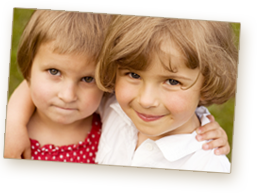Published in Boulder County Kids, Spring 2013, p. 27
by Nancy Monson and Maribeth Nelson
Which is worth more, a crowd of thousands,
Or your own genuine solitude?
Freedom, or power over an entire nation?A little while alone in your room,
Will prove more valuable than anything else that could ever be given you.– Rumi
We live in a busy world, where more emphasis is placed on what we do, what we look like, what we achieve and what we own, than on who we are … what we feel, think or experience. This imbalance can easily create illness, depression, a feeling of loss and disconnect (not just from ourselves, but from being able to be deeply satisfied and nourished by the world).
Spending quality time alone, is about coming home to our self and our inner world, and staying in contact with that which is deep and permanent … and invisible … that “which can not be lost in a shipwreck.” Self knowledge requires time alone that is quiet, allowing for reflection, feeling, relaxing, and yes, sometimes discomfort. Self knowledge is the path to integrating experience and information, leading to discovering who we are, what we are here to do and fulfilling ourselves through the giving of our gifts back to the world.
It is important early in life to begin to provide children with the opportunity to “just be” with themselves. It is just as important to “bond” with our self as it is to bond with our primary caregivers. It is both of these bonding experiences that allow us to continue to connect deeply to our self and others as we go through life, laying the foundation for an integrated balance between moving easily and with confidence between these two worlds: the inner and the outer. Too little time spent alone can leave a child feeling empty and shallow, dependent on others (a constant need for emotional stimulation) or material things for their sense of self. Too much time alone leaves a child feeling unable to meaningfully connect to others. If both of these bonding experiences happen in an appropriate way, then the possibility of a child feeling confident and secure in themselves can come to fruition.
So what does it look like for children to have this very necessary nutrient as part of their education? It begins with babies! Babies are born from a place of darkness, stillness and quiet. And while connected to the mother as a living medium, they are in the womb by themselves. They are very used to this kind of space when they are born, obviously much more than the world of people, stimulation, light and activity. We’ve all noticed times when a baby is quiet and content, looking around, gazing at things, and it’s clear that they’re enjoying themselves. It’s important that a baby have this kind of time – to begin to assimilate the world into itself and process experience internally – “how does my world feel to me” and “How do I feel to myself?” It’s fine and it’s necessary to allow the baby space to do this. In addition to meeting the baby’s physical and other emotional needs, this is one of the first balances that needs to be struck for a child. And it’s up to the parents to tune into what the baby’s needs are in this way – some children by nature are more outgoing, some more introverted, some need more alone time, some thrive on more people time. If it’s too little or too much one way or another, you’ll see a baby who gets cranky, irritable or falls asleep, in an attempt to regulate the incoming or lack of incoming stimulation.
For children who haven’t had this kind of experience from early on, it’s best to talk about alone time as a family practice (parents are no exception to this need for quiet alone time) and a balance that everyone needs in their lives – time spent alone and time spent with other people. A good visual aid for showing children what happens to us internally when we’ve been busy all day with school, friends and activities, is to use a glass jar filled with water and dirt. Shake it up, and as the water clears, it gives a good example of how we can feel clear and settled when the contents of our minds, feelings and bodies have a chance to stop being so busy! This can be used at any age to describe our internal situation.
So if at all possible – find a time that can work for everyone in the family to take 15 -20 minutes where they can be alone in their own space. Young children to start with can’t be still – it’s not the nature of a child’s energy. But they can learn to settle and relax, which is the first step toward becoming still. During alone time – young children or any child who’s never done this before, can play quietly in their room or an spot in the backyard when it’s warm. But, NO SCREEN time. It can take some time for kids to settle down and in. You’ll notice the shift in energy when this happens. Playing soft, slow music (Gregorian chants work well) helps create a soothing environment. Some families set a timer – especially at first if kids are a little anxious about being alone for a brief time. As a child gets older, 6 years or more, s/he can begin to develop more focused stillness, along with doing alone time once a day. Sitting for 1–5 minutes with a parent and a candle or other object the child likes to look at, trying to stay still, the child will begin to learn what it is to be centered, grounded and focused. Over time, both these practices can increase in time.
Another place to help children slow down and feel themselves is in nature. Nature is one of the easiest accesses to silence, stillness and presence. At Running River School we do alone time both in the classroom and on our weekly hikes. The key is to start young if you can (but it’s never too late … I was in my 20s!). Be consistent, and make it a family practice. It is about learning how to simply “be” and not have to be “doing” all the time to feel a sense of self. We want children to reach teens feeling solidly connected to themselves, their feelings, and experience, which is the best defense against the extreme pulls of peer pressure, social media, and unhealthy cultural norms. Children who have this kind of internal connection would never be capable of the acts of violence against others that we’ve hears about lately… or against themselves. We owe it to the children to give them this gift that will be an ally and guide throughout their entire lives.
____________________________________________
Nancy Monson is founder and director of Running River School, as well as a teacher and parent educator: www.runningriver.org or nancy@nullrunningriver.org
Maribeth Nelson is a licensed professional counselor specializing in child and family therapy. www.harmonizingforkids.com.

